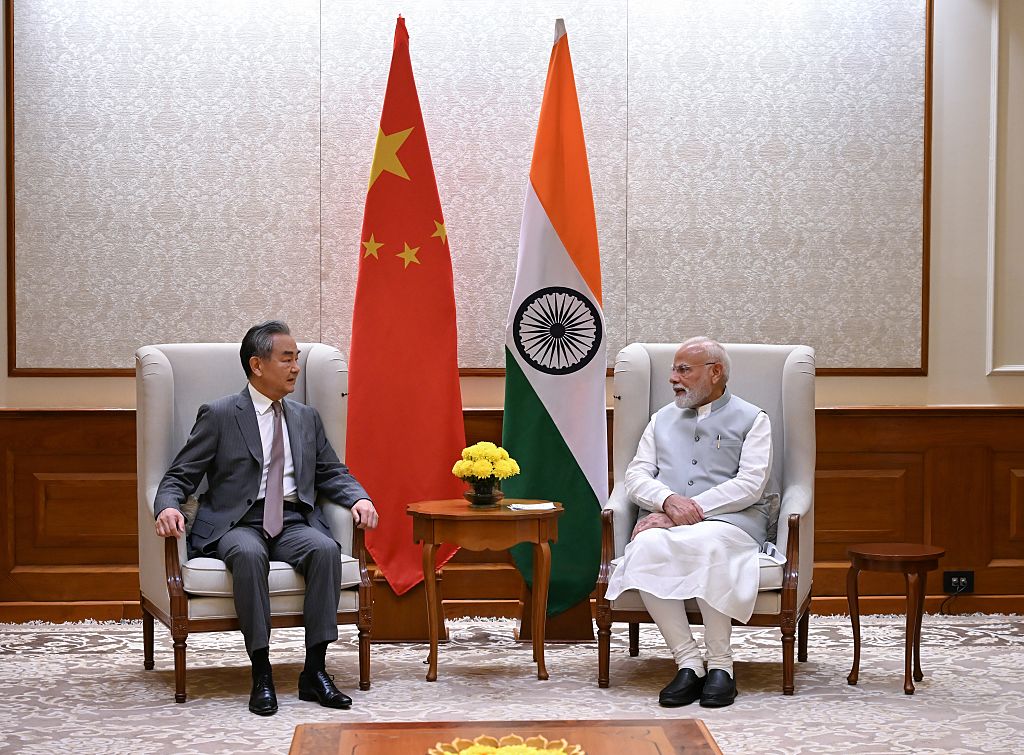India and China are drawing closer, after years of heightened tension.
Just in the last few days, Chinese Foreign Minister Wang Yi had been in New Delhi, meeting Prime Minister Narendra Modi and other senior Indian officials as direct flights between the neighboring nations are set to resume for the first time in five years. Wang’s meeting with his Indian counterpart, S. Jaishankar, was only the second such meeting between the two sides since the 2020 border skirmishes killed at least 20 Indian troops and four Chinese soldiers. Wang’s “positive” meetings seems to have laid the groundwork for Modi’s first visit to China in seven years later this month, where he will meet China’s President Xi Jinping.
[time-brightcove not-tgx=”true”]
The rapprochement is being analyzed through the Trumpian lens as India-U.S. ties grow turbulent. President Donald Trump has imposed staggering 50% tariffs on Indian imports—the highest in Asia. White House Trade Advisor Peter Navarro has alleged that India serves as a “global clearinghouse for Russian oil,” by refining embargoed crude and exporting it at high value, effectively funneling much-needed dollars to Moscow. In language echoing Cold War rhetoric, Navarro has warned: “If India wants to be treated as a strategic partner of the U.S., it needs to start acting like one.” India has ramped up its purchase of Russian oil, but it was the U.S. under the previous Biden Administration that had asked Delhi to buy oil from Russia to help stabilize the global energy market.
Read More: How Modi Misread Trump
But such arguments have no currency for Trump, whose hopes for an early trade pact with India have been met by Delhi’s tough negotiating stance, likely the true rationale for the tariffs from a man who has often praised Russia over Ukraine.
Whatever the case, Indian public attitude toward Trump is souring as he publicly humiliates the country and its leadership. This is further constraining the ability of Indian officials to reach a deal with Washington on tough issues like trade. But it may also have the effect of endangering the carefully crafted Indo-Pacific policies of both nations as questions arise about the future of the Quad Alliance in which India has joined Australia, Japan, and the U.S. to manage China’s growing influence in the region.
The recent U.S.-India spat is therefore an opportunity that Beijing has been waiting for—opening up new possibilities for China to work with India on certain issues to rebuild its ties but also to blunt the sharper edge of a once-burgeoning India-U.S. partnership.
Yet it would be a mistake to view this primarily as a response to Trump’s behaviour. While Trump’s actions may have accelerated the Sino-Indian engagement, this process of cautious normalization has been going on since October when India and China reached a deal on patrolling arrangements in an attempt to de-escalate tensions along the disputed Himalayan border.
Ever since the 2020 clashes, Delhi had maintained that it was Beijing that had unilaterally changed the status quo by building tents and observation towers on its side of the border. When China accepted to disengage last year, it was an implicit admission that it was indeed Beijing’s actions that had caused the crisis. And as a result, Delhi moved to restore political ties with China.
Since then, several steps have been taken toward normalizing relations. China has permitted Indian pilgrims to visit key religious sites in the Tibet Autonomous Region this year. In return, India has resumed visa services for Chinese tourists and agreed to restart talks on reopening border trade through designated passes. During Wang’s recent visit, the two sides also decided to set up new expert and working groups for boundary delimitation as China assured India of addressing its requirements of fertilizers, rare earths, and tunnel boring machines (TBMs)—the imports of which have been impacted due to strained Sino-Indian ties.
But few in India have any illusions about the future of Sino-Indian ties. There have been too many false starts in the past. With or without the U.S., India will continue to be cautious about Chinese intentions as the fundamentals of the relationship remain competitive and Delhi remains keen to build a deterrence framework so that a situation like 2020 doesn’t arise again.
If Trump is indeed a factor, he is a marginal one.

